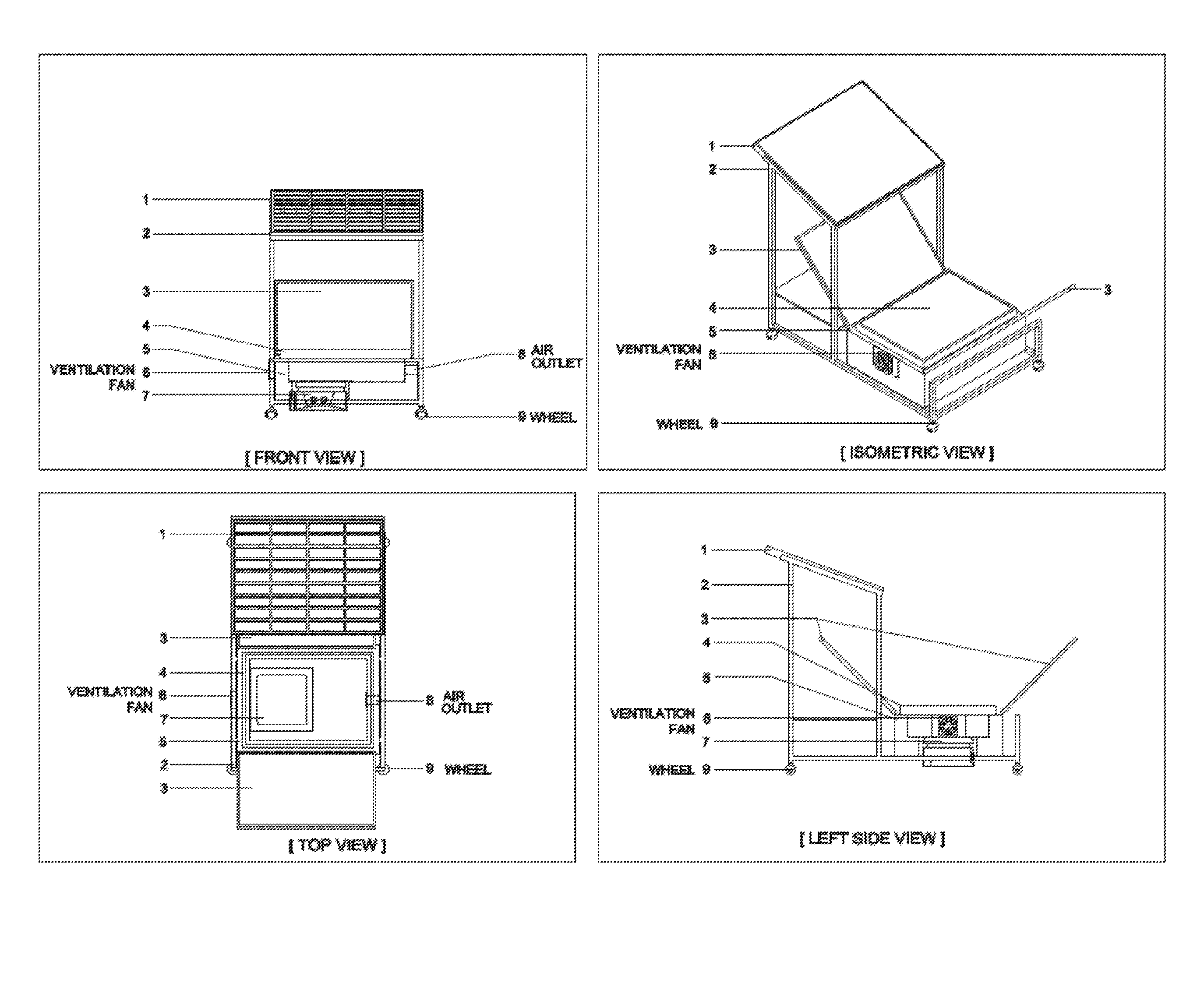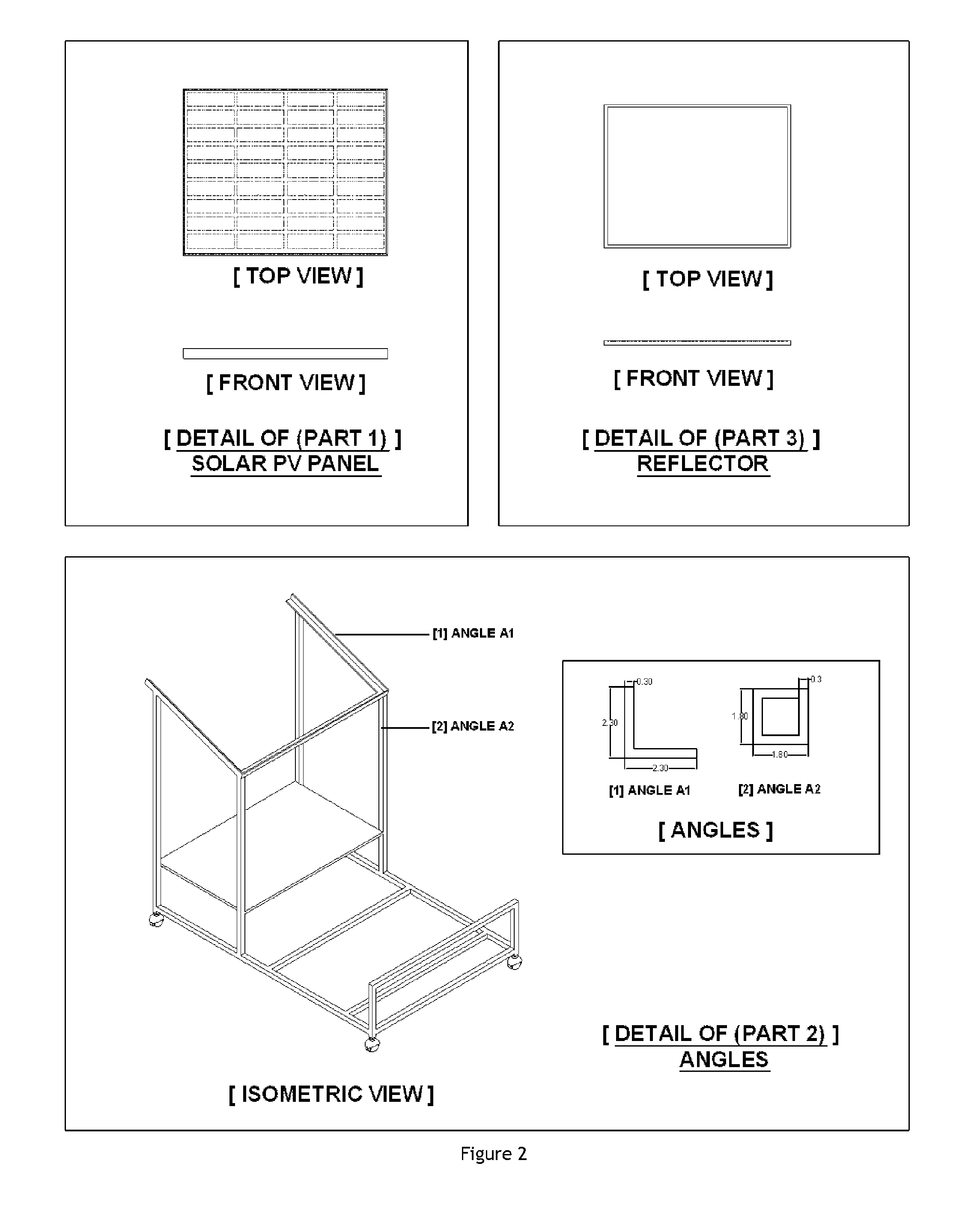Process for conducting organic reactions in a standalone and affordable laboratory scale solar photo thermochemical reactor
a technology of solar photo thermochemical and laboratory scale, which is applied in the direction of liquid gas reaction process, chemical/physical/physical-chemical stationary reactor, chemical/physical process, etc., can solve the problem of excessive reaction time and other problems, and achieve the effect of promoting solar energy use, affordable cost, and reducing the cost of the process
- Summary
- Abstract
- Description
- Claims
- Application Information
AI Technical Summary
Benefits of technology
Problems solved by technology
Method used
Image
Examples
example 1
Maximum Temperature Attainable in SPTR 1
[0048]Glycerol was taken in the RB flask and placed in the unit of SPTR1 without operation of the fan and stirrer. The table below lists the interior temperature and glycerol temperature for different ambient conditions 30.05.2012. It can be seen that a maximum temperature of ca. 110° C. could be attained.
TABLE 1Temperature profile inside the SPTR1 and inside the RBFTemp of glycerolTemp of theAmbi-windsolar in-placed insideinterior ofentspeed,tensity,Timethe rb flaskthe devicetempm / swatt / m210:30:0273.981.2390.6946.211:00:0282.986.111:30:0291.194.3400.9100012:00:0299.198.712:30:06101.5105.74111064.513:00:07106.4110.613:30:07108.8110.3411.6817.214:00:07109.1107.814:30:07108.1103.6441.6903.215:00:07105.497.615:30:079885390.9741.916:00:0788.373.516:30:0779.365390.6591.317:00:0769.554.417:30:0762.147.2371.1279.5
example 2
Temperature Control in SPTR1
[0049]In the similar way of Example 1, temperature in the range of 55-70° C. could be maintained with the operation of the PV-powered fan. The table below lists the interior temperature and glycerol temperature for different ambient conditions 03.06.2012.
TABLE 2Control Temperature profile using dc fanTemperatureAmbientTimeobtainedtemperature11.3047.33711.45583812.00573912.15633812.30634112.45624113.00624013.15593913.30583813.455838
example 3
Benzylic Bromination in SPTR 1
[0050]Bromination reactions were conducted in the device of Example 1 under stirring and with or without operation of the fan. Initially reactions were conducted with p-nitrotoluene as per the equation below. The reactions were carried out without the use of any organic solvents. The table shows that the reactions could be carried out cleanly and efficiently in the unit. It can also be seen that the temperature could be controlled in the range of 55° C.-65° C.
[0051]In the same way p nitro benzyl bromide was synthesized from p-nitrotolune reaction temperature continued to rise to ca. 90° C. and then remained almost constant. The reaction was continued for 2.5 h and the GC yield on reagent basis was found to be 93%. When the same reaction was repeated with operation of the PV-powered fan, the average temperature of the reaction dropped to 65° C. as a result of convective heat loss, while the GC yield rose to 95%. When the RB flask was blackened to prevent...
PUM
| Property | Measurement | Unit |
|---|---|---|
| temperature | aaaaa | aaaaa |
| temperature | aaaaa | aaaaa |
| wavelength range | aaaaa | aaaaa |
Abstract
Description
Claims
Application Information
 Login to View More
Login to View More - R&D
- Intellectual Property
- Life Sciences
- Materials
- Tech Scout
- Unparalleled Data Quality
- Higher Quality Content
- 60% Fewer Hallucinations
Browse by: Latest US Patents, China's latest patents, Technical Efficacy Thesaurus, Application Domain, Technology Topic, Popular Technical Reports.
© 2025 PatSnap. All rights reserved.Legal|Privacy policy|Modern Slavery Act Transparency Statement|Sitemap|About US| Contact US: help@patsnap.com



